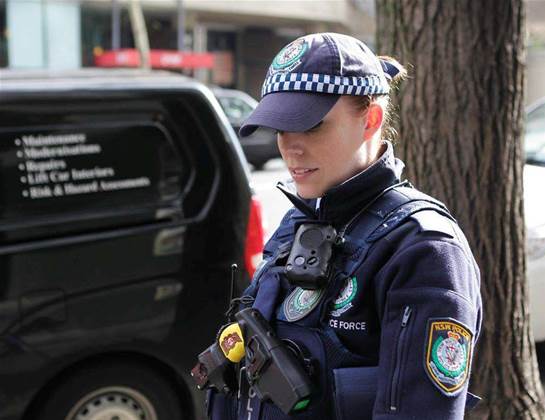NSW Police CIO Chris Robson expects a full rollout of body-mounted video cameras across the force’s frontline to produce up to petabyte of data within a year, creating a whole new storage headache for him and his team.

“What are we going to with a petabyte of video a year?” he asked guests of the AIIA at a Sydney conference on Friday.
“We are going to have a lot of fun around the information management aspects of body worn video – let alone the more prosaic problem of how am I going to get this stuff from the field to a central repository with as few moving parts as possible."
Last month NSW Police Minister Stuart Ayres announced $4 million to fund the rollout of the body-worn devices, which will allow officers to film interactions and act as a deterrent to verbal and physical violence against police.
The actual number of devices that will end up on the beat, however, has yet to be decided.
“A tender process will be undertaken to determine which device is most suitable to the needs of our officers. Until this has been completed, we can’t determine how many devices will be able to acquire,” a spokesperson for the NSW Police told iTnews.
The agency also confirmed the allocations would cover training and support services to users and their commands.
Even if the volume of footage being uploaded by officers only reaches more conservative estimates of 700TB each year for the first two years, the video initiative will still create an enormous data challenge for the force.
The first thing the force will need to address, Robson said, is how long to keep the data.
When it comes to video directly related to a case, footage filmed on the body-worn devices will be uploaded into the VIEW evidence management system and treated just like other items of digital evidence.
But for the bulk of the captured footage – which will remain uncategorised – the parameters get trickier.
“I know if it relates to work, health and safety, it has to be retained for between 25 and 75 years,” Robson said.
“I know if it relates to a chargeable offence I have to keep if for somewhere between ten years and forever.
“But the interesting thing is that at the time the data is captured, we might not know what it is relevant to.”
A more feasible scenario could see all video subject to a default two-month retention period, unless it is assigned to a case.
Robson believes projects like the body-worn video initiative may soon force a rethink of state archiving practices.
“We are digitising and recording stuff that we were never able to record before, and it is going to generate massive volumes of data. We are going to have to come up with good processes and rules,” he said.


_(20).jpg&h=140&w=231&c=1&s=0)


.png&h=140&w=231&c=1&s=0)





 iTnews Executive Retreat - Security Leaders Edition
iTnews Executive Retreat - Security Leaders Edition












_(1).jpg&h=140&w=231&c=1&s=0)



